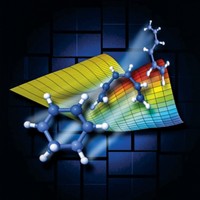Advertisement
Grab your lab coat. Let's get started
Welcome!
Welcome!
Create an account below to get 6 C&EN articles per month, receive newsletters and more - all free.
It seems this is your first time logging in online. Please enter the following information to continue.
As an ACS member you automatically get access to this site. All we need is few more details to create your reading experience.
Not you? Sign in with a different account.
Not you? Sign in with a different account.
ERROR 1
ERROR 1
ERROR 2
ERROR 2
ERROR 2
ERROR 2
ERROR 2
Password and Confirm password must match.
If you have an ACS member number, please enter it here so we can link this account to your membership. (optional)
ERROR 2
ACS values your privacy. By submitting your information, you are gaining access to C&EN and subscribing to our weekly newsletter. We use the information you provide to make your reading experience better, and we will never sell your data to third party members.
Physical Chemistry
X-Ray Pulses Expose Surface Reaction
Technique illuminates steps in a catalytic mechanism
by Jyllian Kemsley
February 16, 2015
| A version of this story appeared in
Volume 93, Issue 7
Femtosecond X-ray laser pulses can reveal new details of the mechanisms of surface-catalyzed reactions, reports an international team of researchers using the X-ray free-electron laser at SLAC National Accelerator Laboratory’s Linac Coherent Light Source (Science 2015, DOI: 10.1126/science.1261747). The method probes how electronic structure evolves in bimolecular interactions, resolving events that happen within hundreds of femtoseconds. The experiments were led by Anders Nilsson of SLAC and Stockholm University and Henrik Öström and Lars Pettersson of Stockholm University. The scientists studied carbon monoxide oxidation on a ruthenium surface. They used a so-called pump-probe approach, applying a 400-nm laser as the “pump” to excite the molecules, then X-ray pulses as the “probe” to generate X-ray absorption spectra of the reactants CO and O as they form the product CO2. Coupling the experimental data with theoretical modeling, the researchers suggest that the reactants go through a first transition state in which the reactants reorient on the surface and come together to form a long OC—O bond. The species then goes through a second transition state that involves a bent CO2 molecule with a shorter, but still elongated, OC–O bond.





Join the conversation
Contact the reporter
Submit a Letter to the Editor for publication
Engage with us on Twitter